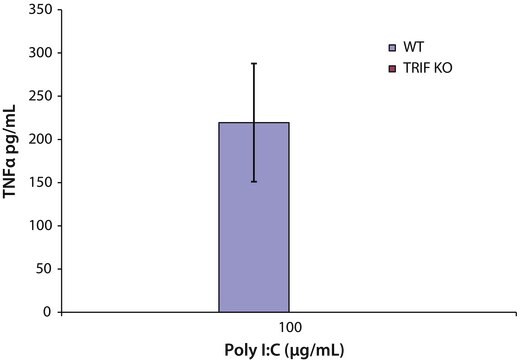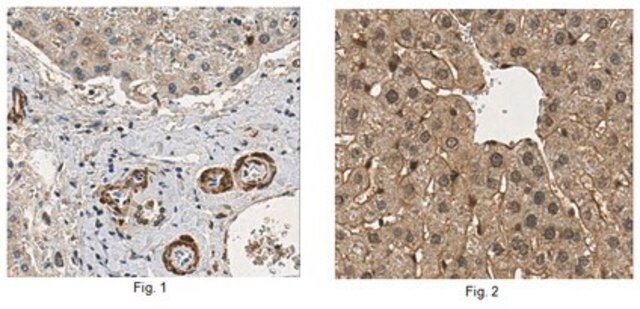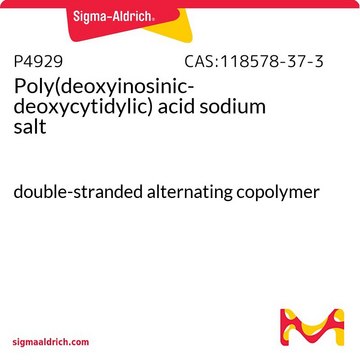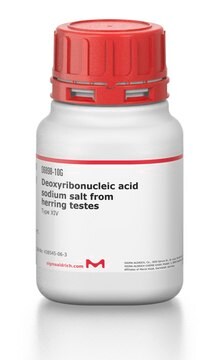P1530
Polyinosinic–polycytidylic acid sodium salt
TLR ligand tested
Synonym(s):
Poly (I:C), Poly(I) • Poly(C)
About This Item
Recommended Products
Quality Level
Assay
≥99% (less than 1% free nucleotides, TLC)
form
lyophilized powder
storage condition
desiccated
solubility
H2O: 10 mg/mL
storage temp.
−20°C
InChI
1S/C10H13N4O8P.C9H14N3O8P.Na/c15-6-4(1-21-23(18,19)20)22-10(7(6)16)14-3-13-5-8(14)11-2-12-9(5)17;10-5-1-2-12(9(15)11-5)8-7(14)6(13)4(20-8)3-19-21(16,17)18;/h2-4,6-7,10,15-16H,1H2,(H,11,12,17)(H2,18,19,20);1-2,4,6-8,13-14H,3H2,(H2,10,11,15)(H2,16,17,18);/t
Looking for similar products? Visit Product Comparison Guide
Application
Biochem/physiol Actions
Other Notes
Preparation Note
Storage Class Code
11 - Combustible Solids
WGK
WGK 3
Flash Point(F)
Not applicable
Flash Point(C)
Not applicable
Personal Protective Equipment
Choose from one of the most recent versions:
Already Own This Product?
Find documentation for the products that you have recently purchased in the Document Library.
Customers Also Viewed
Our team of scientists has experience in all areas of research including Life Science, Material Science, Chemical Synthesis, Chromatography, Analytical and many others.
Contact Technical Service










